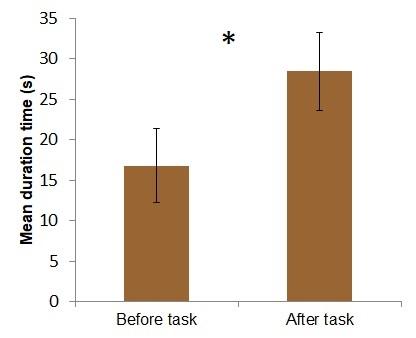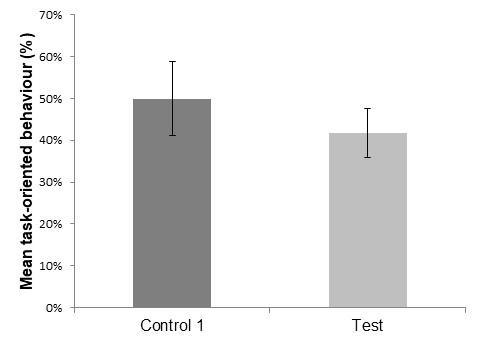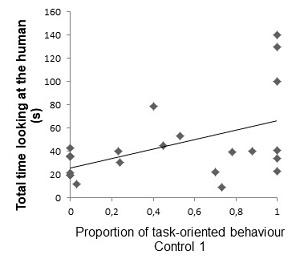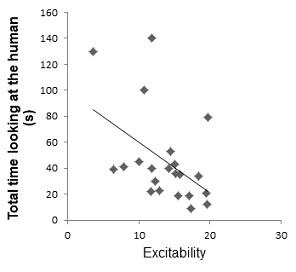Experiment 1-Unsolvable task

-
The horses significantly increased their time spend in proximity to a human and had a tendency to significantly increase time looking at the human after the experimenter had hid a piece of carrots in the bucket.
-
Rank and age did not seem to have a major impact on the horses' behaviour during experiment 1.
-
Geldings showed more social behaviour towards the human compared to mares.
-
Ponies spent more time looking at the human compared to horses which instead spent more time away from the human compared to ponies.
Experiment 2-Detour

- The success rate was not significantly different between control and test.
- Only five out of 22 individuals were helped solely by the human demonstration.
- Proportion of time spent on task-oriented behaviour was not significantly different between control and test.
- Geldings and ponies spent a significantly higher proportion of time on task-oriented behaviour than mares.
- The individuals that succeeded in the test showed in general a significantly higher proportion of task-oriented behaviour in the experiment.
- Rank and age did not seem to have a major inpact on the horses' behaviour during experiment 2.
Experiment 1 vs. Experiment 2

- The horses that succeeded in the demonstration test in experiment 2 did not show more contact seeking behaviour in experiment 1 than those that did not succeed in experiment 2.
- The total time that the horses spent on looking at the human in experiment 1 had a significant positive correlation with the proportion of time spent on task-oriented behaviour in the first control of experiment 2.
Personality survey

- Whether the horses succeeded in the detour experiment (Experiment 2) was not significantly affected by personality.
- The personality trait "Excitability" correlated or had a tendency to correlate negatively with looking at the bucket and time spent in both the human zone and in the bucket zone. In addition, "Excitability" also tended to correlated positively with time spent away from both the human and the bucket.
- The same patters was found for the personality trait "Anxiousness". A more anxious horse is more likely to avoid standing in the human zone and looking at the bucket and instead spend time elsewhere.
- A horse with a more excited and anxious personality showed less taskoriented behaviour in experiment 2.
- "Excitability" and "Anxiousness" also had a positive significant correlated with each other .
Responsible for this page:
Director of undergraduate studies Biology
Last updated:
05/03/18
